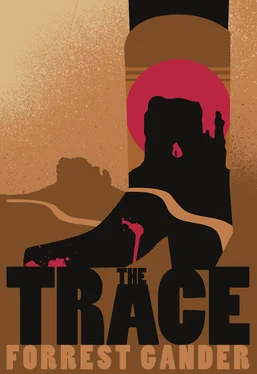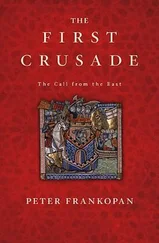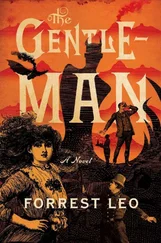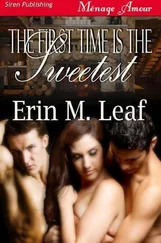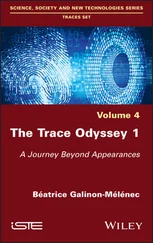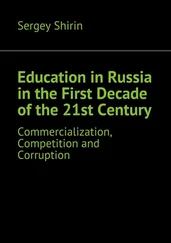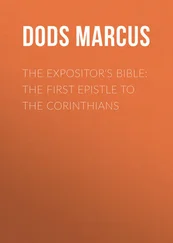Forrest Gander - The Trace
Здесь есть возможность читать онлайн «Forrest Gander - The Trace» весь текст электронной книги совершенно бесплатно (целиком полную версию без сокращений). В некоторых случаях можно слушать аудио, скачать через торрент в формате fb2 и присутствует краткое содержание. Год выпуска: 2014, Издательство: New Directions, Жанр: Современная проза, на английском языке. Описание произведения, (предисловие) а так же отзывы посетителей доступны на портале библиотеки ЛибКат.
- Название:The Trace
- Автор:
- Издательство:New Directions
- Жанр:
- Год:2014
- ISBN:нет данных
- Рейтинг книги:3 / 5. Голосов: 1
-
Избранное:Добавить в избранное
- Отзывы:
-
Ваша оценка:
- 60
- 1
- 2
- 3
- 4
- 5
The Trace: краткое содержание, описание и аннотация
Предлагаем к чтению аннотацию, описание, краткое содержание или предисловие (зависит от того, что написал сам автор книги «The Trace»). Если вы не нашли необходимую информацию о книге — напишите в комментариях, мы постараемся отыскать её.
The Trace — читать онлайн бесплатно полную книгу (весь текст) целиком
Ниже представлен текст книги, разбитый по страницам. Система сохранения места последней прочитанной страницы, позволяет с удобством читать онлайн бесплатно книгу «The Trace», без необходимости каждый раз заново искать на чём Вы остановились. Поставьте закладку, и сможете в любой момент перейти на страницу, на которой закончили чтение.
Интервал:
Закладка:
“More like Rio Trickle by the time it gets to Mexico.”
A little further on, Dale stuck his head inside a farmacia, asking if it was open. It was, they just turned the lights off to keep it cooler. Dale stepped inside, Hoa after him, and he asked for directions to the old fort. After a brief discussion with the young female clerk, the elderly woman at the register called out Luis, Luis, until the pharmacist emerged from the back, curious and friendly in his white smock, carrying a green book with a painting of fruit on the cover.
Dale glanced down to make out the book’s title. Alimentación y something erapia.
“Nada más que ruinas,” the pharmacist said softly, regretful about disappointing them. He put his book down on a stack of other books.
“Pero ándenles, take a look.” The pharmacist indicated the way with his arm, which made him briefly resemble the statue of Benito Juárez. “Two blocks right, two blocks left.”
“Oh, una cosa más,” Dale added. “Is there a hotel here called The Palace Hotel or an office called The Foreign Club, El Club para extranjeros?”
The pharmacist stared at the glass counter, pensively scratching his cheek with his index finger. He consulted the young clerk and they both spoke with the elderly woman behind the adding machine. No, no, they had heard of nothing called by those names.
“Thanks then,” Hoa called. The cowbell above the door clanked again as they went out.
“This is great,” Dale said, following the pharmacist’s directions. “So during the Revolution, this fort, which was supposed to be impregnable —”
“Right.”
“— and a customs house by the river went back and forth between Pancho Villa and the Federales about four times. At one point, there was a Scottish mercenary working for Villa who helped stage a fake attack. Villa was famous for mounting huge cavalry charges, so this mercenary stampeded a bunch of horses with branches and tin cans tied to their tails toward the customs house here. The Federales were dug in in foxholes —” Dale put his hand to his forehead, scanning, and pointed north, “— over that way. And from their foxholes, they heard this incredible racket coming toward them. They figured it was Villa and his army charging. So they panicked and fled. But Villa wasn’t even in the state then. It was just this Scottish guy and a general of Villa’s with a pack of horses and some stray detachment of troops.”
They came straightaway to the old fort in the middle of town. It took up a full city block; its four outer walls had been painted yolk-yellow a long time ago. Around the footings, brick showed beneath adobe. Old wooden doors in the wall had been mortared up, but musket holes still gaped in the upper sections. Just enough of the ramparts remained to suggest that there had been crenelations.
They crossed the street to look into the fort through the main gate. Adjacent to the gate was a stand-alone sentry house not much larger than a sentry. Peering through the small window, Hoa exclaimed something in Vietnamese. Then, “Think of the hours those men logged in this tiny oven.”
Bolted to the shattered timber of an old portcullis, chain-link fencing kept them from entering the fort, but they could see into the large courtyard and to the back wall, which was mostly rubbled.
“So Bierce would have come here before Villa’s troops, presumably,” Dale said, wanting to keep her interested in his detective work. “I think a lot of the garrison fled before Villa actually got here, especially women and children and the rich. The fight went on for several days.”
“Do you think that’s a barracks? Or a magazine?” Hoa pointed through the fencing, across the rubble, to a small stone building attached to the inner rampart. She answered her own question while Dale was thinking about it. “Maybe a guardhouse. It’s got barred windows.”
“Good eye,” Dale nodded. “What if we walk around the other side?”
He thought he felt his phone vibrating against his thigh and pulled it out of his front pocket. It was turned off.
“You go ahead, I’m going to scout out a place for brunch.” Hoa held her fedora between her knees and lifted her hair from the back of her neck. The fedora’s sweatband had left a red indentation in her forehead. She put her bungee around her wrist and pulled her hair down over her shoulders.
She was good at finding places to eat and she had a talent Dale lacked for ordering the right thing from the menu. But remembering the soldiers, Dale said, “Why don’t you come with me, just a couple minutes. I wrote down a place to eat already.” He reached into his back pocket for his notepaper, unfolded it, and pretended to look for the name of a restaurant.
A car with someone calling through a loudspeaker in a raspy voice, missing almost all its human qualities, puttered slowly up the cross street.
“Something about a vote,” Dale translated for her, still looking at his notes, trying to remember the name of the restaurant he’d seen near the zócalo.
They were standing at a corner beside the cart of a meat vendor, whose warm, fly-encrusted carcasses hung in the late-morning air from a rack over his block. A woman was buying something boneless that he had just chopped into four red sections, weighed on his scale, and slipped into a clear plastic bag. The bloody meat, the brass weights, and the woman’s money all passed in brisk sequence through the butcher’s thick fingers.
“Los Comales,” Dale said, “that’s the restaurant. It’s what?” — he looked — “almost eleven, but they might be open already. We can trade dollars for pesos there.”
The two boys on bicycles appeared again, pedaling slowly, directly ahead of them. As they turned the corner, first one and then the other turned his head toward them. Checking them out. Hoa glanced at Dale, but he hadn’t noticed.
* * *
After serving two tours in Vietnam doing clerical work on account of his flat feet and bad eyes, Hoa’s father had become an accountant. He met Hue, Hoa’s mother, in Hanoi, where she worked for the U.S. embassy. He married her and flew her to Charlotte, North Carolina, in 1967, where she eventually found work as a court reporter. Hoa was born in 1970. She was nine and an avid ballerina when her father died of a stroke, leaving her mother to raise her through some difficult teenage years, finally sending her to the University of North Carolina at Asheville where she graduated with a degree in art — useless according to her mother. Hoa met Dale, with his high Swedish cheekbones, his angular shoulders, and his runner’s build — in the library. But their first real conversation took place at her senior exhibition, just before she graduated. Dale had circled back through the show to ogle a big shino-glazed vase that Hoa had fired. It was her first experiment rubbing her vases, still warm from the kiln, with iron oxide, which dramatized the crackly texture. Dale reintroduced himself, which was unnecessary — she certainly remembered him from the library — and they talked briefly. Hoa studied him as he walked away. He was a professor, and so, in some sense, off-limits, but she was just a few weeks short of no longer being a student. Six months later, after joining Studio Clay Co-op, she had another show, and she made sure to send Dale an invitation.
After that second show, Dale asked if he could come to her studio to see her work. She said yes before she realized that she didn’t know whether he meant he wanted see her at work or see more of her work. Hoa had been making a series of what she called Cambrian Explosions. Soon, Dale was sitting on a stool at one end of her studio, watching her open a plastic bag and dump a thirty-pound block of clay on the table.
Читать дальшеИнтервал:
Закладка:
Похожие книги на «The Trace»
Представляем Вашему вниманию похожие книги на «The Trace» списком для выбора. Мы отобрали схожую по названию и смыслу литературу в надежде предоставить читателям больше вариантов отыскать новые, интересные, ещё непрочитанные произведения.
Обсуждение, отзывы о книге «The Trace» и просто собственные мнения читателей. Оставьте ваши комментарии, напишите, что Вы думаете о произведении, его смысле или главных героях. Укажите что конкретно понравилось, а что нет, и почему Вы так считаете.
